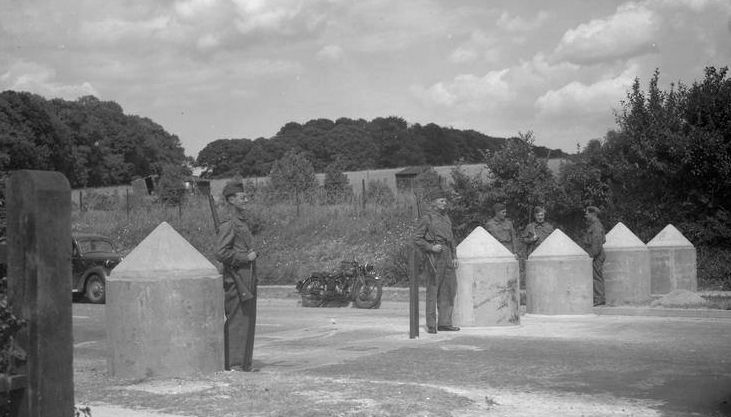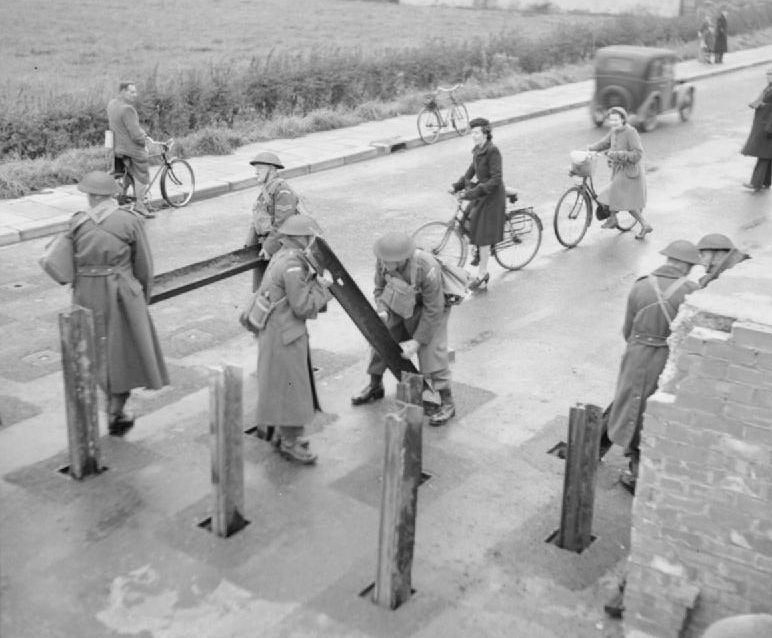British Fortifications
to oppose Operation Sealion (Seelöwe)
The simplest form of anti-tank obstacle was a simple cylinder of concrete.
The Buoy was an anti-tank obstacle used to block roads intended to impede enemy movement. They were widely used during the invasion crisis. The buoy was a truncated cone of concrete. They placed accross a road in at least five rows.
The advantage of buoy was that it could be used to block or unblock a road quickly. Passing a rod or crossbar through a pair of buoys formed a wheeled axle that could easily be rolled into place; when the axle was removed the buoys could be separated and stood up.
Another way to create a roadblock was to have holes pre-dug in the road and then insert metal girders when it was desire to impede the enemy's passage.

Home Guard anti-tank obstacles in Findon, Sussex, 26 August 1940

Home Guard soldiers in York prepare a roadblock by inserting metal girders into pre-dug holes in the road, 2 November 1941
In May 1940, the Directorate of Fortifications and Works (FW3) was set up at the War Office. It was to provide basic pillbox designs which could be easily be constructed by soldiers and local labour. FW3 issued 8 designs. There were 6 basic designs for rifle and light machine gun pillboxes, designated Type 22 to Type 27. The Type 28 was designed to emplace either the Ordnance QF 2 pounder or the Hotchkiss 6 pounder gun. The eighth design(but without any Type number) was designed to emplace the Vickers Medium Machine Gun.
In addtion to these standard types, there existed a small number of pillboxes that had been constructed during the First World War and some early Second World War pilboxes that pre-dated the publication of the FW3 designs.
About 28,000 pillboxes and other hardened field fortifications were constructed in the United Kingdom of which about 6,500 still survive.
|